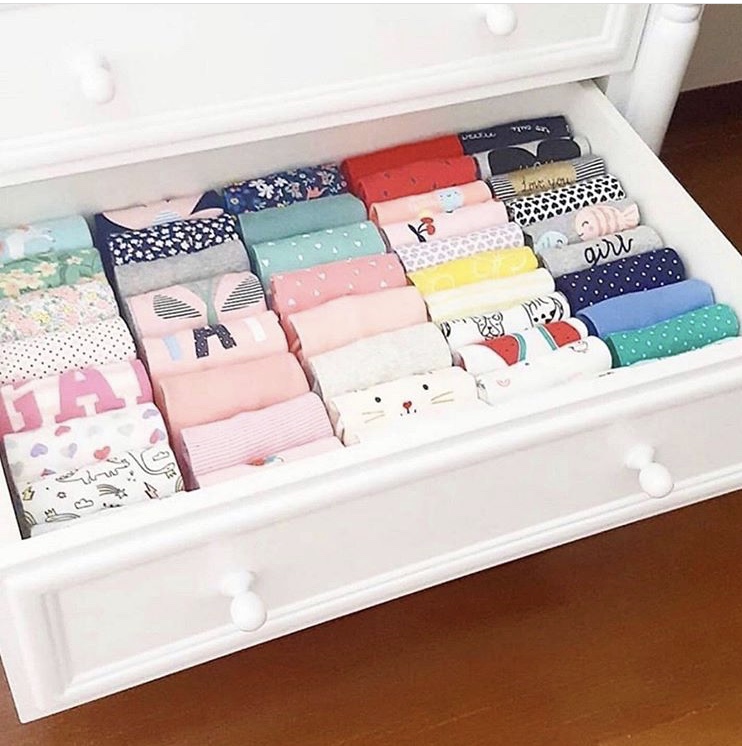Practical advice for transforming your home and your life
In the second instalment of our interview with professional home organiser Maria Saxby, we are exploring more about how she helps clients to create more inviting, functional and peaceful homes, and sharing some great ideas for getting organised that you can start using today.
Making changes to your home doesn’t need to be costly or time-consuming, you can start with small projects and find your own personal way to feel settled and comfortable in your space.
Let’s expand on ‘your space’ a little. The Good Home Report, an international study into the links between our happiness and our homes, tells us that the actual size of our homes is less important, but feeling like we don’t have enough space was found to be one of the basic needs that has the greatest impact on having a happy home. Decluttering, rearranging and making simple home improvements can make changes that boost our happiness levels and really change the feeling of space inside your property.
In this part of the interview, we asked decluttering expert Maria Saxby to tell us more about the practical aspects of home organisation, and how we can all start to tackle the areas which can often feel the most overwhelming. In a simple but effective opening line, Maria said: “You don’t need a bigger house - you need less stuff!”
Maria Saxby, Professional Home Organiser
Maria, how do you help people get more organised?
I am different to some organisers because I myself have had to learn to be organised, and to defeat my natural procrastinating tendencies. I know what it is like to be confronted with growing chaos, but I also know first hand the benefit of tackling it head on, and the calm and peace that having an organised environment gives me. Basically, I love an organised space, but I want to have a life too. Everything I do with my clients is to help them have the beautiful home or office space they desire and set it up in such a way that it takes barely any time to maintain because let’s face it, you’d rather be having a glass of wine in the garden than searching through multiple piles of paper for that important document you suddenly really need.
How do you create more space in someone’s home?
Firstly it's essential to remove things that no longer work for them or that they have multiple useless duplicates of. That’s the easiest way to instantly start changing your space, and it typically triggers various emotional responses, sometimes a sense of freedom and elation, and often a realisation of reasons why the were holding on to so many items.
Flat surfaces are not for storage
A kitchen where the surfaces are clear except for toaster, kettle, microwave and coffee machine will look cleaner, be easier to keep clean, and so much more relaxing to be in. I always keep this in mind when planning storage and work it through with my clients so that all their hard work can last long after I leave them.
Have a proper home for every single thing, and keep like items together
If you keep like items together and in one place, only then will they stop randomly appearing all over the house, creating clutter and more work for you. Label drawers or shelves so they have a home and everyone knows where to find things. This might not sound like it’s about space, but you will soon realise if you have 15 rolls of sellotape if you are keeping them all in the same place and it actually really helps to decrease the overall amount of items in your home.
You can have a place for everything!
Think vertical when it comes to storage and look for unused spaces
There are lots of ways to use narrow spaces for storage. You can use tall book shelves, or put small chests of drawers in the bottom of wardrobes to avoid having a pile of shoes at the bottom and then just empty space. If you move your fridge along a few inches you could add a tall narrow kitchen trolley between the fridge and cabinets to create a neat, pull out larder. Try using the backs of wardrobe doors for hanging shoe holders. Look up and see what space you have that you are not using.
Do you have any particular tips for storage in certain areas of your home?
Bedroom - clothes create the majority of mess, so always put them away and don’t let piles build up. Keep your whole wardrobe visible all year round so you always can see how many items you really have. Fold everything so it stands vertically, and hang clothes by colour from dark to light to help you make choices. Use slim matching non-slip hangers to keep the clothes looking more uniform, and find ways to use the back of wardrobe doors for hanging scarves, jewellery and other light items.
Also, your bedroom shouldn’t double as a workspace or anything other than a resting and relaxing space if you can possibly help it. You need a place that’s just your own for your mental health and sleep hygiene, so try and make it an inviting and calm space to come into at night.
Fold clothes so that everything is visible.
Children's rooms - less is more! Children love colour and fun, but tons of toys and piles of books in their resting space isn’t actually great for them, and they also don’t need masses of clothes, even though you might feel like they wear a lot at times. Keep your children’s belongings pared back and save hassle and stress. In terms of storage, allocate a specific place for every item and label drawers and boxes to help them be responsible for their own space. Teach them how to tidy and fold properly because they need to learn that just like they learn to clean teeth or eat with cutlery. They deserve to have a tidy, restful place to wind down just as we adults do.
Kitchen - the heart of the home and the area that can easily get super messy! My best storage tips are that (again!) less is more! Don’t have duplicate items like corkscrews or five lunchboxes if you just have one child etc. One or two at the most will be fine. Try not to use your work surfaces for storage, and your kitchen will be your most easily tidied room if you work on that basis.
Keep paperwork out of the kitchen and set up an ‘office’ somewhere even if it’s just a calendar on a wall and a small basket under it for items that need to leave the house like post or school forms. Bin junk post right away and deal with incoming items quickly, to save it piling up.
Use spice racks inside pantry doors for all kinds of products; baking powders, sauce packets, coffee jars etc. Use tubs or cardboard boxes to hold spices and packets so your cupboards stay neat and organised. Decant as much as possible into storage containers to keep your pantry easy to clean and also looking better! You can hang saucepan lids on a rack inside cupboard doors to save space too.
Do you have any hints and tips for making space more versatile?
The first thing I do when working in areas that need to do double or triple duty is to really work out how the client will really use the space, and make sure it is fit for their real life (not just Insta life!). Talking about the real flow of the home and planning for how it is used is really important to work out their needs and make sure it’s practical.
Secondly, create storage that ensures items relating to each specific purpose the room has can be completely put away. For example, if your dining room has to double as a homework central for the kids and craft space for Mum, small trolleys with two or three shelves are a perfect homework station, and can be moved around easily. Separate shelves and boxes for different craft items will make sure that when each person uses the space it's easy to tidy up and then use the dining table for dinner.
Third, think about using foldaway items. Fold down desks that are stored on the walls, sofa beds in the guest room or office, an ottoman in the front room for storing all the board games. There are so many brilliant solutions these days.
Footstools with storage space are a great way of providing a little extra capacity and keeping a room looking clutter free.
Next, think about flexible lighting and seating, and using open bookcases or screens to section larger rooms for different purposes. This will create flexibility and structure at the same time for not much money at all.
I've lived in a large house in Texas, and also a new build apartment in London, so I understand the issues that come with lots of space and then also hardly any at all! There is always a way to make your home fit for purpose and a happy place to be, no matter where you live.
Wow, so many ideas and different ways to get organised! We’re definitely feeling inspired and hopefully these suggestions help you see how making changes needn’t be such a huge challenge. As Maria has experienced, many of the clients we work with know what they want to achieve, but are unsure of where to start or what their options are, and that’s where we can help develop a personal vision that suits their lifestyles. We love helping people realise their dreams of a beautiful, happy home, so if that sounds like you, get in touch today.





